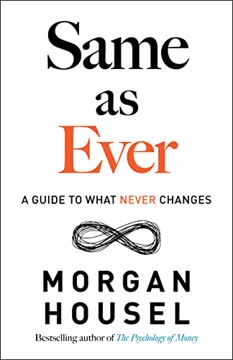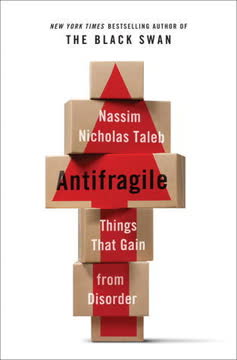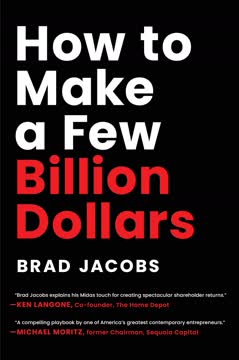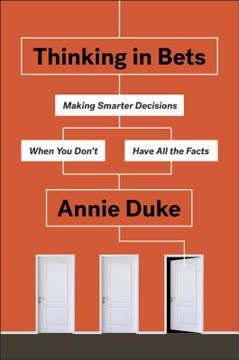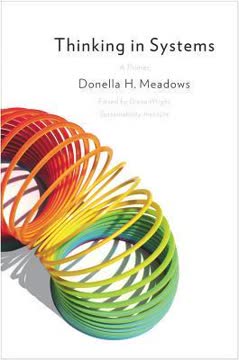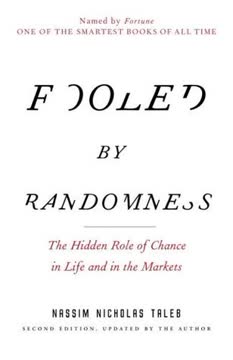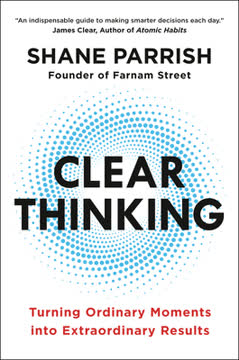重点摘要
1. 地图不是领土:认识模型的局限性
现实是*终的更新。
模型简化了现实。 地图和模型是理解世界的基本工具,但它们本质上是有缺陷的表示。它们通过简化复杂性使信息变得可管理,往往忽略了关键细节。
局限性和偏见。 每个模型都反映了其创建者的价值观、标准和局限性。地图可以影响领土,正如简·雅各布斯对忽视城市实际功能的城市规划模型的批评。为了有效使用模型,我们必须:
- 了解它们的目的和背景
- 认识到它们的局限性和潜在偏见
- 根据现实世界的反馈定期更新它们
- 愿意丢弃或修改不再适用的模型
实际应用。 使用任何模型或框架时:
- 质疑其假设及其对你具体情况的适用性
- 寻找模型可能过于简化或扭曲现实的地方
- 寻求多种观点和互补模型以获得更全面的理解
- 随着新信息的出现,保持更新你的观点
2. 能力圈:知道你知道什么和不知道什么
你只认为你知道,实际上并非如此。
自我意识至关重要。 了解你的能力圈意味着认识到你在某些领域有深厚的知识和经验,而在其他领域缺乏专业知识。这种意识有助于你做出更好的决策,避免代价高昂的错误。
建立和维护能力。 发展能力圈需要:
- 好奇心和学习的欲望
- 持续监控你的表现和决策
- 寻求他人的诚实反馈
- 愿意承认并从错误中学习
在能力圈外操作。 当面对超出你专业知识的情况时:
- 学习新领域的基础知识
- 咨询专家并提出有见地的问题
- 应用一般的思维模型来增强你有限的理解
- 谨慎对待过度自信,认识到你知识的局限性
3. 第一性原理思维:将复杂问题分解为基本要素
如果你知道你理解什么,你就知道你在哪些方面比别人有优势。
挑战假设。 第一性原理思维涉及将复杂问题分解为*基本的元素。这种方法使你能够质疑假设,并从基本真理中构建解决方案。
建立第一性原理的技巧:
- 苏格拉底式提问:系统地挑战你的思维和假设
- 五个为什么:反复问“为什么”以深入挖掘问题的根本原因
实际应用:
- 创新:埃隆·马斯克对电动汽车和火箭的思考方式
- 问题解决:识别核心问题而不是治疗症状
- 决策:基于基本真理而不是传统智慧做出选择
通过从第一性原理开始,你可以避免渐进思维的陷阱,并为创造性解决方案打开新的可能性。
4. 思维实验:用想象力探索可能性
思维实验可以定义为“用来研究事物本质的想象装置”。
心理模拟的力量。 思维实验使我们能够探索在现实中可能不可能、危险或不切实际的情景和想法。它们帮助我们获得洞察力,挑战假设,并产生新的假设。
思维实验的关键应用:
- 想象物理上的不可能(例如,爱因斯坦的电梯)
- 重新想象历史(例如,反事实思维)
- 直觉非直观(例如,罗尔斯的“无知之幕”)
进行有效的思维实验:
- 明确定义问题或问题
- 建立相关的背景知识
- 构建一个合理的情景
- 分析结果并得出结论
- 将结果与初始假设进行比较并相应调整
思维实验是扩展我们理解和产生创造性解决方案的强大工具,但必须以严格和批判性思维使用它们,以获得有价值的见解。
5. 二阶思维:考虑后果的后果
这些模型之所以如此危险……是因为为了分析目的而假定的约束在经验环境中被信以为真。
超越直接影响。 二阶思维不仅涉及考虑我们行动的直接后果,还涉及其后续影响。这种方法帮助我们避免意外的负面结果,并做出更稳健的决策。
二阶思维的关键方面:
- 认识到复杂系统中的相互联系
- 预见潜在的连锁反应
- 平衡短期收益与长期后果
实际应用:
- 政策制定:评估新法律或法规的潜在意外后果
- 商业策略:考虑竞争对手可能对你的行动做出的反应
- 个人决策:权衡生活方式选择的长期影响
要练习二阶思维,总是问:“然后呢?”这个简单的问题可以揭示隐藏的风险和机会,否则可能会被忽视。
6. 概率思维:估计可能性以做出更好的决策
概率理论是唯一可用的数学工具,可以帮助绘制未知和不可控的地图。
应对不确定性。 概率思维涉及估计不同结果的可能性,以在不确定的情况下做出更好的决策。它帮助我们超越非黑即白的思维,考虑一系列可能性。
概率思维的关键概念:
- 贝叶斯思维:根据新证据更新信念
- 厚尾曲线:认识到极端事件的可能性
- 不对称性:理解我们的概率估计可能存在偏差
实际应用:
- 风险评估:评估潜在的威胁和机会
- 决策:根据成功的可能性权衡选项
- 预测:通过考虑多种情景做出更准确的预测
要提高你的概率思维:
- 寻求多样的信息来源
- 考虑历史数据和当前趋势
- 随着新信息的出现定期更新你的估计
- 注意可能扭曲你判断的认知偏见
7. 反向思维:从多个角度解决问题
反向思维是一种强大的工具,可以改善你的思维,因为它帮助你识别和消除成功的障碍。
翻转问题。 反向思维涉及从自然起点的相反方向处理情况。这种技术可以揭示新的见解并帮助避免陷阱。
反向思维的两种主要方法:
- 假设你试图证明的东西是真的,然后展示其他必须为真的东西
- 不直接瞄准你的目标,而是思考你想避免的东西
实际应用:
- 问题解决:识别和消除成功的障碍
- 目标设定:定义你想避免的东西,以明确你真正想要的东西
- 决策:考虑正面结果和潜在陷阱
成功反向思维的例子:
- 约翰·博格尔创建指数基金:与其试图击败市场,不如专注于*小化损失
- 消防员进行控制燃烧以防止野火
- 公司进行“预死因分析”以在项目开始前识别潜在的失败原因
8. 奥卡姆剃刀:偏爱简单的解释
如果其他条件相同,即如果两个竞争模型都具有相同的解释力,那么简单的解决方案更可能足够。
简洁作为指导原则。 奥卡姆剃刀指出,简单的解释比复杂的解释更可能是真实的。这一原则帮助我们避免不必要的复杂性,并做出更高效的决策。
为什么简单的解释通常更好:
- 更少的假设和变量可能出错
- 更容易测试和证伪
- 在不确定性面前更稳健
应用奥卡姆剃刀:
- 面对多种解释时,从符合事实的*简单的解释开始
- 寻找减少系统和过程复杂性的方法
- 谨慎对待过于复杂的理论或解决方案
局限性: 记住有些现象本质上是复杂的,不能过度简化。将奥卡姆剃刀作为指导原则,而不是绝对规则。
9. 汉隆剃刀:不要将恶意归因于可以用愚蠢解释的事情
有可能正确的解释是包含少意图的解释。
避免不必要的偏执。 汉隆剃刀提醒我们不要将恶意归因于可以用愚蠢或无能充分解释的事情。这一原则帮助我们在复杂的世界中避免不必要的冲突和偏执。
应用汉隆剃刀的好处:
- 减少压力和负面情绪
- 改善关系和沟通
- 开辟更有成效的问题解决方法
实际应用:
- 人际冲突:在假设恶意之前考虑误解
- 客户服务问题:寻找系统性问题而不是责怪个人
- 工作场所挑战:专注于改进流程而不是分配责任
虽然意识到潜在的恶意很重要,但从无能或错误的假设开始通常会导致更具建设性的结果和更好的问题解决。
最后更新日期:
FAQ
What's "The Great Mental Models: General Thinking Concepts, Vol. I" about?
- Purpose and Scope: The book, authored by Shane Parrish, aims to help readers develop a better understanding of how the world works by introducing them to mental models that enhance decision-making and problem-solving.
- Content Focus: It covers a range of topics including decision-making, learning, and the art of living, drawing on ideas from both science and the humanities.
- Project Ambition: This volume is part of a larger project to create a multidisciplinary education resource that is accessible to everyone, with plans for additional volumes covering various disciplines.
Why should I read "The Great Mental Models: General Thinking Concepts, Vol. I"?
- Improved Decision-Making: The book provides tools to help you make better decisions by understanding and applying mental models.
- Multidisciplinary Approach: It encourages thinking across different fields, helping you connect ideas and think in a more integrated way.
- Practical Application: The models discussed are not just theoretical; they are meant to be applied in everyday life to improve understanding and outcomes.
What are the key takeaways of "The Great Mental Models: General Thinking Concepts, Vol. I"?
- Mental Models: Understanding and using mental models can significantly improve your thinking and decision-making processes.
- Latticework of Models: Building a network of interconnected models from various disciplines helps in understanding complex problems.
- Continuous Learning: The book emphasizes the importance of updating your knowledge and models as you gain new information and experiences.
What is a mental model according to Shane Parrish?
- Definition: A mental model is a representation of how something works, simplifying complex realities into understandable concepts.
- Utility: They help in decision-making by allowing you to see problems from multiple perspectives and identify relevant information.
- Application: The book focuses on models with broad utility, which can be applied across different areas of life and disciplines.
How does "The Great Mental Models" suggest using first principles thinking?
- Core Idea: First principles thinking involves breaking down complex problems into their fundamental parts and building up from there.
- Technique: It encourages questioning assumptions and focusing on the basic truths of a situation to innovate or solve problems.
- Example: The book uses examples like the discovery of bacteria causing stomach ulcers to illustrate how challenging assumptions can lead to breakthroughs.
What is the "Circle of Competence" concept in the book?
- Definition: Your circle of competence is the area where you have deep knowledge and understanding, allowing you to make informed decisions.
- Importance: Knowing your circle helps you identify where you have an edge and where you need to seek help or learn more.
- Application: The book advises staying within your circle for decision-making and expanding it through continuous learning and feedback.
How does "The Great Mental Models" explain second-order thinking?
- Concept: Second-order thinking involves considering the long-term consequences of actions, not just the immediate effects.
- Importance: It helps in avoiding unintended consequences by thinking through the ripple effects of decisions.
- Application: The book provides historical examples to show how failing to consider second-order effects can lead to disaster.
What is the significance of Occam's Razor in the book?
- Principle: Occam's Razor suggests that the simplest explanation is often the most likely to be correct.
- Application: It helps in decision-making by encouraging you to avoid unnecessary complexity and focus on the most straightforward solutions.
- Examples: The book uses examples from science and everyday life to illustrate how this principle can lead to more efficient problem-solving.
How does "The Great Mental Models" address probabilistic thinking?
- Definition: Probabilistic thinking involves estimating the likelihood of various outcomes to make better decisions.
- Tools: The book discusses tools like Bayesian thinking and fat-tailed curves to help understand and apply probabilities.
- Application: It emphasizes the importance of considering probabilities in complex, uncertain situations to improve decision accuracy.
What role does inversion play in problem-solving according to the book?
- Concept: Inversion involves approaching a problem from the opposite end, such as thinking about what to avoid rather than what to achieve.
- Utility: It helps in identifying obstacles and simplifying complex problems by considering them from different angles.
- Examples: The book provides examples of how inversion has been used in various fields to achieve innovative solutions.
What are some of the best quotes from "The Great Mental Models" and what do they mean?
- "The quality of your thinking depends on the models that are in your head." This emphasizes the importance of having a diverse set of mental models to improve decision-making.
- "Understanding only becomes useful when we adjust our behavior and actions accordingly." This highlights the need to apply knowledge practically to effect positive change.
- "Avoiding stupidity is easier than seeking brilliance." This suggests that focusing on avoiding mistakes can be a more effective strategy than trying to achieve perfection.
How does "The Great Mental Models" suggest dealing with complexity?
- Simplification: The book advises using mental models to break down complex problems into simpler, more manageable parts.
- Interconnected Models: It encourages building a latticework of models to see problems from multiple perspectives and understand their interconnections.
- Continuous Update: It stresses the importance of continuously updating your models and knowledge as you gain new information and experiences.
评论
《伟大的思维模型》评价褒贬不一。许多人称赞它对决策和解决问题的思维模型的介绍,有些人认为这是必读书目。读者们欣赏其简明的解释和现实世界的例子。然而,批评者认为内容基础,缺乏深度,组织不佳。一些人觉得有声书的叙述质量不高。尽管有批评,许多读者仍然重视这本书改善思维方式的方法,并期待系列的后续卷。总体而言,这被视为理解思维模型的一个良好起点,但仍有改进的空间。
Similar Books
